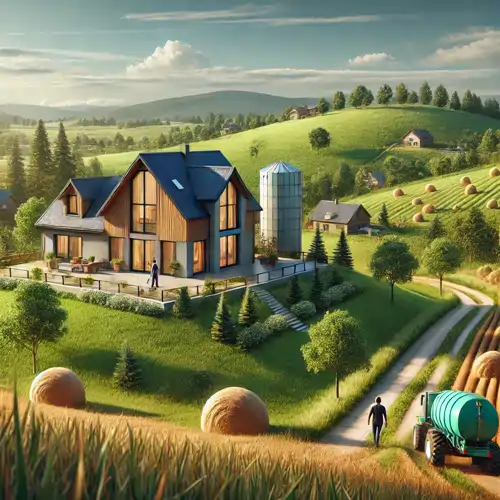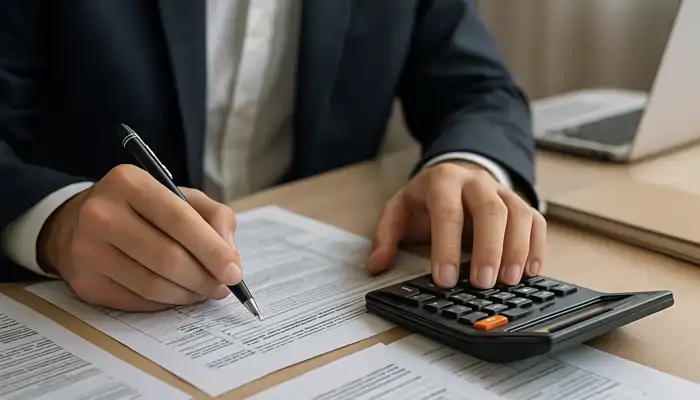Modern market conditions and lifestyle changes contribute to a growing interest in rural real estate. The purchase of farms and country houses attracts both investors and those seeking tranquility and the possibility of earning passive income. This article examines the main issues faced by potential buyers and offers solutions based on legal, financial, and practical analysis.
1. Key Concepts and Features of Rural Real Estate
Rural real estate is defined as a land plot primarily intended for agricultural or livestock purposes, as well as for carrying out environmental protection activities. Such properties are often characterized by limited infrastructure such as the absence of sewage systems, electricity, and other conveniences typical of urban areas. Because of this, buyers face the need for additional investments in improvements.
An important aspect is the classification of land: plots designated as rural often have a lower price compared to urban ones, but the possibilities for construction are limited. Typically, only agricultural buildings or structures directly related to the use of the land (for example, barns, hangars for storing equipment) are permitted.
2. Legal Aspects and Possibility of Residence
One of the main issues is the legality of residing in rural areas. In most cases, constructing residential houses on land that is unsuitable for urban development is prohibited. However, if there is already a registered house built more than 40 years ago on the plot, living in it is considered legal. For this, it is necessary to check the title documents, land cadastre data, and the Real Estate Registry (РН – Real Estate Registry).
When planning the construction of new housing, options that link the house with agricultural activities (for example, service buildings on a farm) are permitted. In addition, some municipal authorities allow construction if the rural plot is located at a significant distance from the owner's primary residence.
3. Practical Recommendations for Purchase
When choosing rural real estate, it is important to consider the following recommendations:
- Verification of the property status. Before purchasing, it is necessary to personally inspect the plot, study the title documents, and ensure there are no hidden defects that may lead to additional expenses for maintenance or repair.
- Evaluation of infrastructure and access. The location of the plot, its transport accessibility, and the availability of utilities play a key role. Isolated properties may require additional expenses for connecting to the main engineering networks.
- Legal verification. It is recommended to involve specialists – a lawyer and an appraiser – for document analysis and confirmation of the transaction's legality. For foreign buyers, it is important to obtain an identification number for foreigners (NIE – identification number for foreigners), which is necessary for conducting any transactions.
- Negotiations and market value assessment. Evaluate the actual market value of the property using both online services and consultations with specialists. This will allow you to negotiate the price based on objective data.
4. Grants, Subsidies, and Tax Benefits
To reduce the initial costs of purchasing rural real estate, support programs are available. One example is subsidization under the Common Agricultural Policy (ЕАП – Common Agricultural Policy of the European Union). Farmers and investors can expect grants for modernizing properties, creating agricultural enterprises, and implementing agroecological projects.
In addition, in some regions there are tax benefits, such as a reduction in the property tax rate (IBI – property tax) and advantages when obtaining official loans. A comprehensive analysis of available subsidies and tax incentives can significantly reduce overall costs.
5. Stages of the Purchasing Process
The purchase of rural real estate involves several stages:
- Search and inspection of the property. At the initial stage, determine the type of property that meets your goals – whether for personal residence, rental, or investment in agriculture.
- Negotiations and contract signing. After selecting the property, the process of negotiating the price and terms of sale begins. Usually, a preliminary contract with a deposit is signed.
- Notarial formalization and registration. The transaction is executed by a notary, after which it is necessary to register the transfer of ownership in the Real Estate Registry (РН).
- Post-sale procedures. Depending on the condition of the property, work on improvements, restoration, or modernization may be required, which should be carried out in accordance with current regulations.
6. Investments in Exclusive Country Real Estate
Exclusive country real estate is gaining particular popularity among investors who seek not only tranquility and seclusion but also additional income. Such properties are often used for renting to tourists or hosting events (weddings, corporate retreats, family celebrations). The large area and unique natural conditions create opportunities for organizing various activities, which positively affects the profitability of investments.
Key advantages include:
- Long-term value growth. Limited supply and high demand ensure a steady increase in property values.
- High profitability. The possibility of renting allows for a steady passive income.
- Tax benefits. The availability of state and regional support programs reduces the financial burden.
- Improved quality of life. Living in a natural setting positively impacts health and overall well-being.
7. Market Analysis and Future Forecasts
An analysis of the latest trends indicates that the demand for rural real estate in Spain and other countries continues to grow. Factors contributing to this include:
- The rise of remote work. The shift to remote work encourages the desire to live in environmentally clean and quiet areas.
- Economic uncertainty. In conditions of economic instability, many buyers consider rural real estate a safe asset.
- Changes in consumer habits. The post-pandemic period has increased interest in country living and sustainable development.
Forecasts for 2025 indicate moderate price growth (approximately 3–5% per year) and increased transaction activity, especially in regions with high demand.
8. Price Aspects and Regional Features
Prices for rural real estate vary depending on the location, plot area, and available infrastructure. For example, in some regions, such as Valencia, there is an observed increase in the average cost per hectare, which is linked to limited supply and high demand. At the same time, in other areas, prices may remain more affordable, providing opportunities for investors with different budgets.
It is important to note that the prospects for price growth depend directly on the quality of the property, its location, and the potential for further development. A proper market assessment and timely improvements or restoration works can significantly increase the property's value.
Conclusion
The purchase of rural real estate is a complex process that requires careful analysis of legal, financial, and practical aspects. Studying the property's status, evaluating the infrastructure, conducting skillful negotiations, and involving specialists can minimize risks and ensure stable investment growth. Exclusive country houses and farms not only provide the opportunity for comfortable living but also offer prospects for earning passive income through renting and hosting events.
It is recommended to take a comprehensive approach when selecting a property, considering both current needs and future market development prospects. A careful study of the documentation, analysis of market trends, and the use of state support programs, such as subsidies under the Common Agricultural Policy (ЕАП – Common Agricultural Policy of the European Union), will help make an informed decision and secure a profitable investment.








